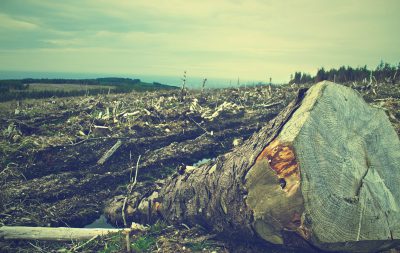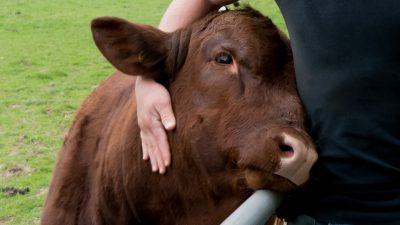Everyone knows that farmed animals are killed for meat, and many more people are coming to understand that they also suffer and die in the milk and egg industries, too. But many people still do not know that the mass farming of animals has a profound and devastating effect on wild animals. So devastating, in fact, that industrial animal agriculture is driving whole species to extinction.
The Scale of Destruction
The Earth’s wildlife populations have plunged by an average of 69 percent since 1970 and animal farming is cited as one key reason. The problem is that it takes a lot more land to produce animal products than vegan products. In order to make way for grazing farmed animals and to grow the crops needed to feed the billions more incarcerated inside factory farms, whole swathes of forests and other ancient habitats are razed to the ground. The wild animals who once lived there are displaced or killed, and such wanton destruction has driven whole species to extinction. Those who blame soy for the destruction of the Amazon may not know that most soy is grown for farmed animal feed, especially chickens.
Researchers have identified two other leading causes of wild animal decline, and they are both connected to our eating habits. First, wild animals are being eaten into extinction and, crucially, fishing is decimating the oceans. Data shows that populations of fish and other marine vertebrates, including marine mammals, reptiles and birds have halved since 1970, and currently one third of all fish populations are fished beyond biological sustainability. Given that most of us don’t need to eat fish, all commercial fishing is overfishing.
Animal Agriculture Is The Problem
The worst affected region is South and Central America, which has seen an 89 percent drop in vertebrate populations, largely driven by the felling of vast areas of wildlife-rich forest for grazing and to grow soy for pig and chicken feed. But it is the same story the world over.
By 2050, Africa is predicted to lose 50 percent of its birds and mammals, and Asian fisheries are likely to completely collapse. The loss of plants and sea life will reduce the Earth’s ability to absorb carbon, and that will exacerbate the effects of climate change, which will drive further extinctions.
In the UK, one-fifth of all wild mammals are at “high risk” of extinction, with some species like the wildcat and the black rat already on the brink. Chatham House cites our food choices as the key driver of wildlife loss.
The damage we are causing is immense, with some scientists declaring that we are entering the world’s sixth mass extinction, and the very first to be caused by a species—us.



